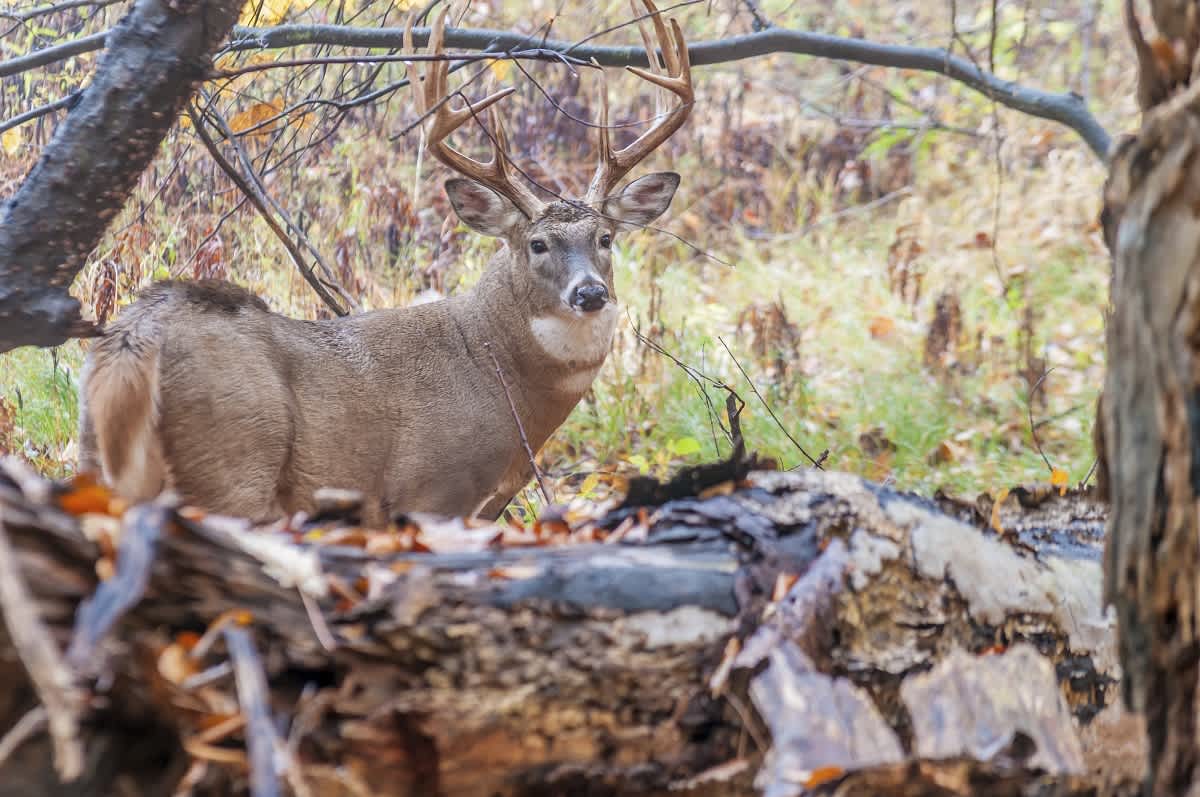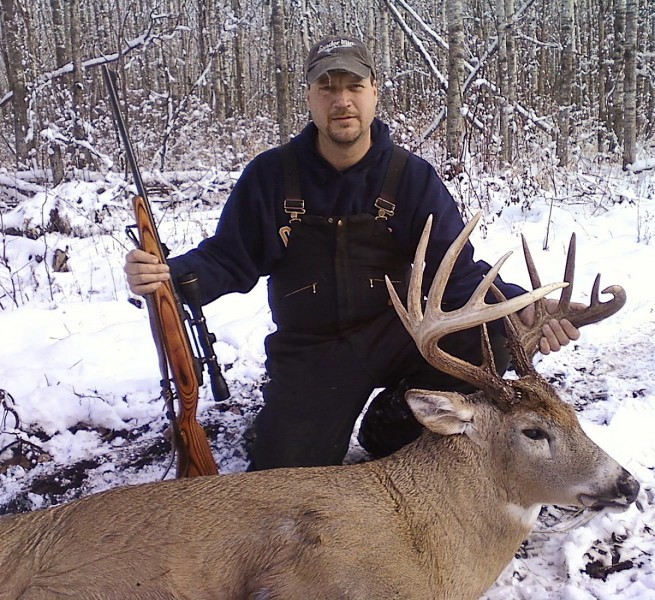Can Boone and Crockett Club Stats Lead You to a Trophy Whitetail?
Bernie Barringer 05.06.15

Most all hunters know that the Boone and Crockett club keeps records of big game animals. Their scoring system is the standard in hunting, and they keep score of all 29 species of North American big game.
Of those big game animals, the whitetail deer is the most popular. Whitetails scoring more than 170 inches typical and 195 inches nontypical are eligible for entry into the book. Nearly 10,000 bucks have been officially scored by B&C-trained scorers, and they keep coming in.
What many hunters do not know is that when a buck is entered, there are some questions on the form that offer insight into the odds of shooting a big buck during specific times of the day, in certain weather and wind patterns, and in particular locations. It even show us which weapons are most popular among hunters that take big bucks. The information from one huge buck doesn’t reveal much, but when you compile the data on thousands of them, well, let’s just say we can learn some things from them.
The right place
Most big bucks are taken on private land. This should come as no surprise, but it’s worth mentioning. Public land gets more pressure as a general rule, and bucks are more likely to get older and grow a big rack when living on private land.
Most big bucks are taken in the Midwest. Wisconsin, with 1,468 entries as of 2014, leads the way. It’s followed by Illinois with 1,286 and Iowa with 1,139. Among the top 10 states, Kentucky and Ohio entry numbers have been surging, while Illinois and Minnesota have been falling.
The right time
The records show that there are two specific spikes in the harvest time for record-book bucks: 7 to 8 a.m. and 5 to 6 p.m. You may have read magazine articles talking about staying on-stand all day, because you may miss a pronounced period of movement at midday, but the stats do not support that. Of 5,500 time entries, less than 10 percent of them were bagged between 11 a.m. and 2 p.m.
By far most record-book bucks were shot from the last week in October through the first three weeks in November. There is a pronounced spike of entries during the first week in November when the rut is in full swing across most of North America.

The right weather
Of all weather influences, wind speed was the most significant factor in the bagging of trophy bucks. In fact, if it’s windy, your chances of getting a big buck drop to nearly zero. Big bucks get big by paying attention to their senses and wind messes with them more than any other weather factor. Everything’s moving, which makes it harder for the deer to detect danger with their eyes. Wind swirls, shifts, and flows all over, making it difficult for them to pinpoint the source of a scent. Wind is noisy, which makes it difficult for deer to hear danger. When it’s windy, they are likely to “wait it out,” and the data proves it. A full 85 percent of trophy bucks were taken when the wind was calm to less than 5 mph, and less than two percent of the bucks were shot when the wind was blowing 20 mph or more.
Apparently deer do not like the rain, either. Or maybe it’s the hunters that stay home during the rain and snow, because 93 percent of the bucks were shot when it was neither raining nor snowing. Cloud cover may be a small factor, but it’s barely noticeable. Bucks shot when it was heavy overcast comprise 11 percent of the harvest, and light overcast makes up 38 percent. The other 51 percent were shot when it was sunny to partly sunny.
I’m not sure how much can be read into the temperature data. Most hunting seasons take place during fall, when temperatures are cooler, and the buck harvest shows that. Most were shot when temperature was between 20 and 60 degrees Fahrenheit. The one nugget of info that may be important is the number of bucks shot when it was really cold versus really hot. There were more than twice as many bucks shot when it was below zero than there were when it was above 80.
The right tool
Rifle hunters account for 46 percent of record-book bucks while 24 percent of them were shot with bows. Interestingly, only 18 percent of bucks were shot with shotguns, which is intriguing since several of the top states only allow shotguns for deer and have no rifle hunting. The remaining 12 percent consisted of muzzleloader, crossbow, and handgun hunters.
The number-one rifle cartridge preferred by hunters who have bagged a trophy whitetail is .30-06 Springfield, followed closely by .270 Winchester. Others rounding out the top five include 7mm Remington Magnum, .300 Winchester Magnum, and .243 Winchester.
This is just scratching the surface of what’s available to the whitetail hunter through the B&C website. The site features a “Trophy Search” that allows you to do your own research by entering specific parameters. It is particularly valuable in finding a great place to increase your odds of finding the buck of a lifetime. With little effort, you can find the states that have giant whitetails and even the counties in any given state the consistently produce big bucks. For a fee of $50 per year, this is a bargain for anyone interested in learning more about B&C-caliber bucks.
Additionally, B&C recently produced a book, Hunting Whitetails, which includes a summary of many of the stats and hunting information compiled with the help of several top whitetail hunters. It is available here.
Follow Bernie’s bowhunting adventures on his blog, bowhuntingroad.com.

